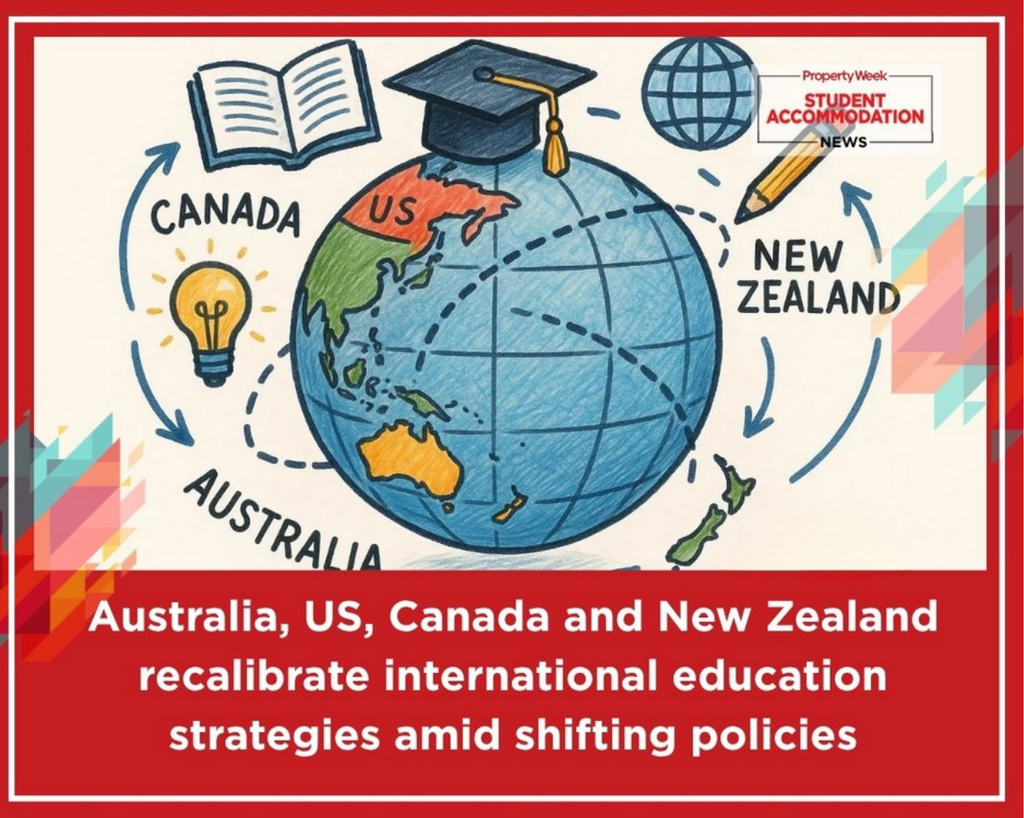
Australia, US, Canada and New Zealand recalibrate international education strategies amid shifting policies
Leading global education markets adopt varied approaches to navigate political, social, and economic shifts, highlighting Australia's strategic focus on Southeast Asia and New Zealand's community-backed growth, amidst US and Canada policy upheavals.
Last week, 1,500 delegates convened in Canberra for the Australian International Education Conference (AIEC) 2025, under the theme of ‘navigating change,’ a reflection of the sector’s recent turbulence and shifting policies. Assistant Minister for International Education Julian Hill emphasised that Australia remains “open for business,” but highlighted ongoing challenges that come with evolving regulatory frameworks. This conference revealed not only Australia’s particular struggles and adaptations but also provided a comparative look at how other major destinations—such as the US, Canada, and New Zealand—are managing their international education landscapes.
The conference foregrounded social licence as a shared priority among these countries, recognising the importance of public support for sustainable growth in international education. For Australia, this comes amid significant policy changes including stringent enrolment limits and some of the highest student visa fees globally. The fee for international student visa applications has risen to A$2,000 as of July 2025, making it the most expensive non-refundable visa application fee worldwide. This has contributed to a 50% year-on-year drop in student visa applications from key markets like India. Phil Honeywood, CEO of the International Education Association of Australia (IEAA), noted the necessity to secure federal backing for a national social licence campaign to rebuild community support, as well as efforts to lobby for a reduction in visa fees for shorter-term study cohorts. Honeywood also pointed to Australia's strategic shift towards Southeast Asian markets for international student recruitment, encouraged by government policies that reward institutions engaging with these emerging regions and those expanding purpose-built student accommodation.
In a broader policy context, Australia’s recent legislative move to reduce existing student loan debts by over A$16 billion aims to ease financial pressure on graduates and address broader economic inequality. While this relief primarily targets domestic students, it reflects a wider recognition of education’s socio-economic impacts. Concurrently, Australia is redirecting a larger share of its foreign aid budget towards the Indo-Pacific, signalling a strategic focus on regional stability and influence, an effort that could indirectly affect the international education sector's geopolitical context.
Turning to the US, the international education landscape has been profoundly unsettled by the policy churn following Donald Trump’s re-election in January 2025. Fanta Aw, CEO of NAFSA, described a “fast and furious” series of policy directives, including a White House memo proposing a 15% cap on international undergraduate enrolments at top-tier universities tied to federal funding access. The Trump administration has also targeted international students politically, with thousands of visa revocations and travel bans on numerous countries, alongside a suspension of visa interviews that caused widespread global delays. These disruptions have not only deterred student entry but also jeopardised the US’s innovation and research environment, which thrives on the diversity and expertise brought by international students. Unlike Australia, where international students form a smaller share of the total enrolments (around 6%), the US continues to grapple with balancing national security concerns against the economic and academic benefits of open international engagement.
Canada’s experience offers another perspective. After unprecedented international student growth of nearly 30% annually leading up to 2024, the government abruptly introduced a two-year cap on new study permits at approximately 360,000 for 2024. This move aimed to alleviate pressures on housing, healthcare, and institutional capacity, echoing similar concerns about sustainability and community impact seen in Australia. Larissa Bezo, president and CEO of the Canadian Bureau for International Education, acknowledged the suddenness of the government’s actions and the initial perception abroad that Canada had “closed its doors” to students. However, Bezo emphasised that this narrative is inaccurate, though the cap and related policies have dampened international enrolments and challenged ‘Brand Canada.’ Canadian institutions are adapting by rebalancing recruitment between traditional and emerging markets, with the government engaging more closely with stakeholders to foster longer-term policy stability and a coherent global talent strategy. A new nationwide campaign aims both to highlight the benefits international students bring to Canadian communities and to refresh the country’s appeal internationally.
In contrast to these shifts, New Zealand presents a notably more optimistic outlook, with social licence deeply embedded in its education policy framework. The government’s “International Education Going for Growth” plan targets increasing international enrolments from 83,700 to 119,000 by 2034 and doubling the sector’s value to NZ$7.2 billion. Education New Zealand’s director of insights, Marie Clark, described policy adjustments such as increasing allowed work hours for student visa holders and introducing short-term post-study work visas for vocational graduates as “clever compromises” that meet both student aspirations and labour market needs. New Zealand is cautious, recognising that growth must be carefully managed in light of public sentiment—72% of New Zealanders view international education positively, and 77% support maintaining or increasing student numbers. This approach underscores a commitment to growth that is both sustainable and community-focused, aiming for New Zealand to be a “destination of choice” rather than the largest destination.
The 2025 AIEC conference illustrated the varied ways leading education markets are recalibrating their international education sectors amid shifting political, social, and economic landscapes. Australia’s sector is adapting slowly to enrolment caps and high visa fees, with bright spots in government focus on Southeast Asia and infrastructure investment. Canada is stabilising growth after a period of rapid expansion and policy shock, while the US navigates the fallout from a highly politicised policy environment that threatens its competitive edge. Meanwhile, New Zealand’s strategy exemplifies how careful calibration between growth and social licence can build a resilient, community-backed sector. The upcoming 2026 AIEC, to be held in Sydney, promises to continue this vital dialogue on the future trajectory of international education in a world of ongoing change.

